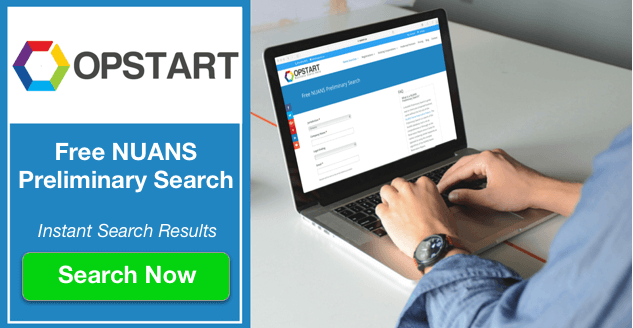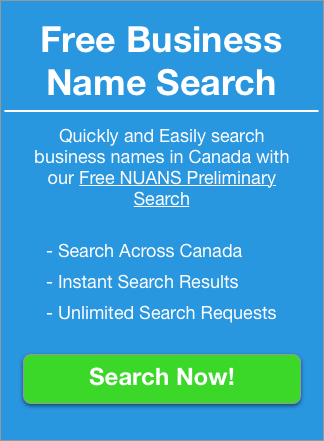The Complete Guide To Starting A Software Company

Software-as-a-Service (SaaS) has changed the way we think about enterprise software companies. Not only that, but cloud technology has made your dream of starting a software company even more attainable.
That’s because SaaS programs offer businesses greater agility, a better platform for continuous delivery of high-quality software releases. This is great for software startups and their clients.
With SaaS taking the business world by storm there’s never been a better time to think about starting a software company.
With these startup ideas for kickstarting a modern software enterprise, you’ll be in the software business in no time.
Step 1: Lead with a Lean Plan
A lean plan is your standard one-page business plan. As the name suggests, it’s succinct and summarizes how you are going to start your business. For more about lean plans, keep reading.
Lean Plans, Explained
A lean plan is a tool that is meant to be used as an internal game plan.
Lean plans aren’t usually made for people outside of your organization to access, like banks. But they can be used to secure angel investors who are interested in funding your idea.
Some may see a lean plan as a pitch. But lean plans really work as a guide to building your company from the ground up.
These plans are like a framework of a more traditional business plan, with fewer details. All of the information can usually be presented in bullet points or short sentences.
When you make a lean plan you should try to keep it on one page, using only the most important details for your business growth.
What Goes Into a Lean Business Plan?
Now that you know what a lean plan is, what goes into making one?
A lean plan follows a certain methodology. Yes, there’s a method to this software business madness. In your lean plan, include:
- Goals: what are you going to accomplish
- Strategy: these are the tactics you will use to accomplish your goals
- Milestones and development: create a schedule for success, including metrics for defining success and who is responsible for those metrics
- Revenue model: this includes basic forecasting of sales against revenue goals and taking inventory of expenses
Taking time to succinctly define each section will help your tech startup hit the ground running.
Tips for Making a Lean Business Plan
Below are some things to consider when making your lean plan:
- In the Goals section, include details like defining the competition, what business problem you are setting out to solve and how you can do that
- Strategy includes things like inside and outside sales, marketing, and who is serving what function
- When creating metrics, be specific and put real numbers in play
- Find templates for creating a business budget and forecast models
With a good understanding of lean models and these tips, you’ll be able to take the first step to starting a software company.
Step 2: Research, Testing, and Competitive Analysis
You’ve already defined the competition, but now it’s time to take a deeper dive.
In this step, you will complete a competitive analysis to learn more about the marketplace you are getting ready to dive into.
You will also start talking to people who match your customer personas in order to test your idea.
Here’s how:
Complete a Competitive Analysis
A competitive analysis gives you important insights about your biggest competitors. This is useful for laying the groundwork for your company.
You can look to your competitors to learn things like what kind of marketing works best in reaching your audience, and how to stick out amongst the crowd.
First, you must decide what competitors to include in your analysis. If your market is very niche, you may be able to name all of your competitors.
In industries like automobile manufacturing, it’s relatively easy to name the major competitors and a good analysis should include each one.
But the more saturated your market is, the harder it may be to name all your major competitors. This is certainly true for SaaS startups.
Every day a new software provider is entering the market. To narrow down the competition you’ll want to focus on any number of factors, like the ones listed below:
Location
Usually for SaaS providers, catering to a local audience isn’t necessary. But perhaps, you’re starting up in a highly competitive area. Or maybe you’re only interested in reaching a domestic market.
Those considerations can be made here to find competitors to research.
Revenue
What are your revenue expectations? It may make sense to focus on competitors who’s annual revenue is in line with what you are hoping to achieve.
Popularity
Including the most prominent competitors in your analysis can help you learn what makes them so popular. That’s valuable to any tech startup, even if you’re in the early stages of your startup.
Product Similarity
In the startup world, the possibilities for enterprise SaaS offerings are really endless. It’s always a good idea to focus on the competitors who are most similar to you in product and culture.
Steps to a Complete Competitive Analysis
Once you’ve got a good pool of competitors for your analysis, you can start chipping away at your analysis.
Do this in four steps:
- Do the research: if you’ve narrowed down your competitors you’re ahead of the game
- Seek out competitor information: revenue, target market, company size, number of employees, number of products, product types, the percentage of the market from marketing materials, annual statements and more
- Analyze the information: use the tools at your disposal to extract the important, bottom-line information
- Find your competitive footing: determine your place in the marketplace
Taking these steps you can elevate your software business above the competitors.
Conduct Market Testing
When you conduct market testing for your new software product, what you want to do first is think about your customer personas.
A customer persona should be relatively easy to come up with given that you’ve already conducted competitor research and gained insights about who the competition is marketing to.
Take those insights and consider what you already know about your product, what problem it solves and for whom. That’s the foundation for your customer persona.
Once you’ve decided the traits, characteristics and buying patterns of who’s going to purchase your product, you’ve got a persona.
Next, seek out those individuals who meet the specification of your customer personas.
To test your idea, talk about it to your ideal customer. Get insight and feedback from the response. Think about these questions:
- Is my solution the right one for the customer’s problem?
- How can it be better?
- What is it missing?
- What other problems do these customers have that are related to the initial problem?
Recording feedback from your customers and applying it is the last phase of testing your idea.
Step 3: Marketing and Launch
When you’re ready to launch you should look into marketing to your target audience.
To do that, think about the following marketing startup ideas.
- Affiliate marketing: consider social influencers who can sell your products
- Social media: get on all the same platforms as your competitors and advertise to your customers
- Paid ads: pay-per-click can be a powerful tool for tech startups
- Marketplaces: when possible, make your service available on the right app stores
- Content: come up with compelling content to answer customer questions and drive organic traffic
- Word of mouth: don’t underestimate the power of a good customer experience
- Testimonials: when possible get a testimonial for your marketing efforts
With your software developed and ready to launch, marketing will get you started on the right foot.
Quick Tips for Tech Startups
Hopefully, at this point, you are feeling pretty confident about your decision to launch your software business. But here are some quick tips to keep in mind as you do:
Offer Multiple Pricepoint Packages
Creating packages that are modular in nature or offer services that expand upon the base package, allows software providers to cater to a variety of business budgets. You could even create a small digital product that is offered for free with more services available at multiple price points.
Keep it Simple
To cater to the self-service customer, SaaS products should be customizable and user-friendly. Think about ways to simplify this process. Things like clean, easy to organize dashboards can make or break your software business.
Use Plugins and Integration
In the perfect enterprise ecosystem, all of the applications that promote important processes and contain proprietary data will talk to one another.
In an environment where enterprises are operating off multi-cloud and hybrid-cloud ecosystems, plugins and integration are critical to customer satisfaction and ease of use.
Consider Professional Services
Ask yourself if there are any professional services you can include for added value. Things like IT help-desk or consultation services can give you a leading edge.
Make a Plan for Great Customer Service
Ultimately, one thing you know can set you apart from the competition is great customer service. Offering avenues to interact with customers, answer questions and guide them to new solutions is a sure way to retain customers, and get new ones via word of mouth.
Don’t Forget About Monitoring
SaaS services need to be highly available and reliable to customers who require them on-demand. As such they should be monitored constantly.
Things to monitor include:
- Key performance indicators (KPIs)
- Recurring revenue
- Customer churn
- Cash inflow
- Customer lifetime value
- Customer pipeline
- Asset tracking; and more
Make sure you have a good handle on how to optimize your dashboard before launching.
Put Metrics Behind Growth and Revenue Success
It’s not good enough to say you want to grow, you have to put numbers behind your predictions.
This means coming up with realistic KPIs and sticking to them. Setting revenue goals, creating detailed forecasts and creating a plan for growth year after year — that’s a recipe for a successful tech startup.
Cultivate Superfans on Social
Use Facebook groups and Instagram pods to create a culture of superfans on social media.
Offering your customers a place to interact with your brand is more than good business. It gives software developers a source for new marketing insights that will help them adjust and create new customer personas.
Conclusion
It’s a great time to consider starting a new SaaS business. The market is full of competitors, but there’s no cap on how many good ideas can exist in the cloud.
With technology lending itself to cloud development and enterprises demanding the flexibility and agility of on-demand services, there’s room for everyone to shine in the 2018 SaaS marketplace.
With these startup tips, you’ve learned:
- How to write a lean plan that will prepare you for a software launch
- What steps to take to launch your business; and
- Suggestions to make sure it grows according to your KPIs
And with these tips in mind, why not get started on your lean plan today?

